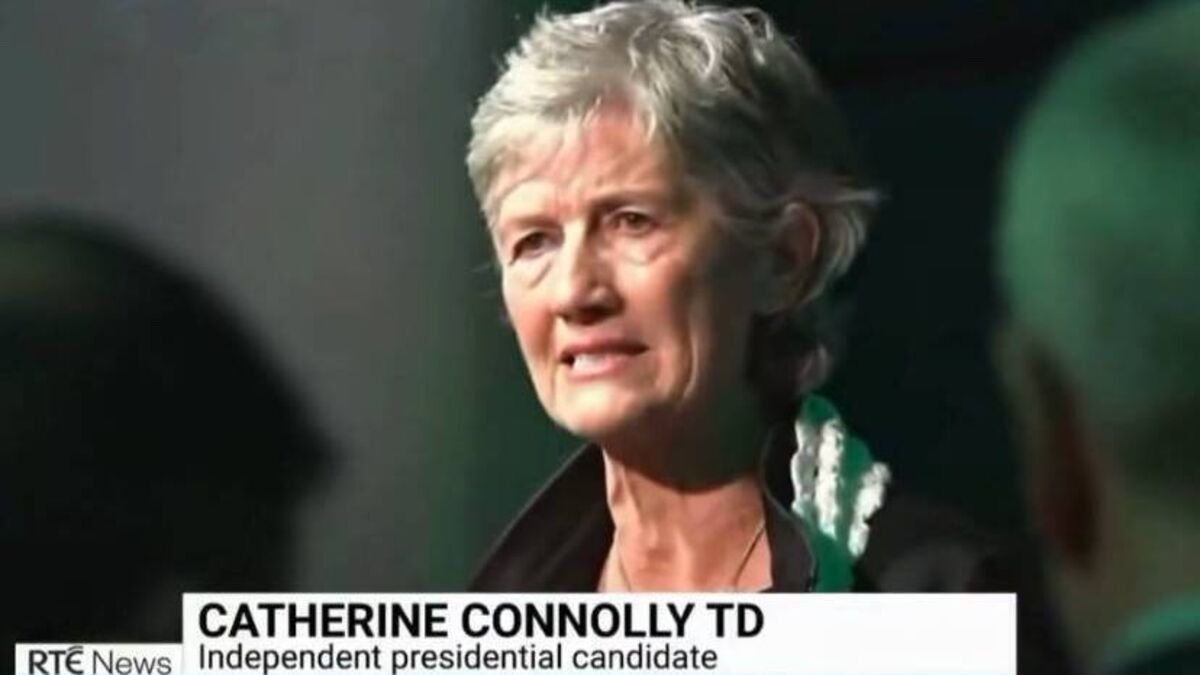A fabricated video of a leading candidate withdrawing from Ireland’s presidential election spread across Facebook, exposing once again how artificial intelligence is being weaponized in politics — from Dublin to Delhi.
A Race Upended by a Fake
Ireland is just days away from electing a new president — a largely ceremonial office that nonetheless holds symbolic and constitutional weight. Independent progressive Catherine Connolly, who has maintained a comfortable lead in the polls, faced an unexpected disruption this week: a viral video that appeared to show her announcing her withdrawal from the race.
The 40-second clip, styled as a RTÉ News broadcast, depicted Connolly addressing supporters, thanking them for their faith, and confirming she was stepping down — a development that, the video falsely claimed, would automatically make her opponent, center-right candidate Heather Humphreys, the next president.
But Connolly had made no such statement. The video was an AI-generated deepfake — a synthetic recording designed to deceive. In less than 12 hours, the post racked up 30,000 views and hundreds of shares before Meta’s moderators finally removed it.
The Anatomy of a Hoax
The fake was posted on a Facebook page named “RTÉ News AI,” mimicking Ireland’s national broadcaster. The video opened with a synthetic anchor announcing Connolly’s withdrawal, followed by deepfaked footage of her face and voice, overlaid with RTÉ-style chyrons.
To the untrained eye, the production was convincing. Only subtle inconsistencies — a slightly robotic cadence, lighting mismatches, and the odd intrusion of non-Irish voices shouting “Catherine, no!” — hinted at manipulation.
Ireland’s media regulator, Coimisiún na Meán, has since contacted Meta “to understand the immediate measures taken” and reminded the company of its obligations under the EU Digital Services Act, which compels platforms to counter election interference.
FCRF Launches CCLP Program to Train India’s Next Generation of Cyber Law Practitioners
Meta’s Familiar Reckoning
For Meta, the parent of Facebook, the Irish hoax adds to a mounting legacy of misinformation crises. From the Cambridge Analytica scandal of 2016 — when 50 million profiles were scraped to target U.S. voters — to its role in amplifying hate speech during the Rohingya genocide in Myanmar, Meta has repeatedly been accused of failing to anticipate how its tools could destabilize political systems.
The Irish episode may appear minor by comparison, but it underscores how cheaply and quickly generative AI can replicate human likeness, and how social networks remain fertile ground for manipulation even in small-scale contests.
From Dublin to Delhi: A Global Pattern
The incident is part of a broader, alarming pattern. In India, deepfakes have already entered the political mainstream. During the 2020 Delhi Assembly elections, a doctored video of BJP leader Manoj Tiwari circulated widely on WhatsApp, showing him speaking in multiple languages he doesn’t actually know — created to appeal to diverse voter bases. Later analyses revealed the video was synthetically dubbed using AI-driven lip-syncing tools.
In 2024, as India geared up for its general elections, several AI-generated campaign clips emerged across party lines. One viral deepfake appeared to show Congress leader Rahul Gandhi endorsing rival parties, while another used AI-cloned voices of regional leaders in Tamil Nadu and Telangana to simulate support messages. The Election Commission warned parties against such “manipulative digital impersonations,” but enforcement lagged behind the technology’s speed.
A recent study by the Internet Freedom Foundation noted that deepfake-related misinformation in India surged by over 150% between 2023 and 2024, driven by the accessibility of generative AI tools and the difficulty of real-time detection.
The New Face of Political Manipulation
Ireland’s AI hoax might seem provincial — a local disturbance in a small election. Yet it echoes a global anxiety. Last year, hundreds gathered in Dublin for a Halloween parade that didn’t exist, organized by a Pakistan-based website using ChatGPT to flood Google’s search results with fabricated event pages. Whether in Dublin’s city center or Delhi’s digital corridors, the script is the same: synthetic content exploits trust, algorithms amplify it, and truth struggles to catch up.
For democracies, the challenge is not just detecting the next deepfake, but ensuring that citizens and platforms — can tell the difference before it decides an election.


